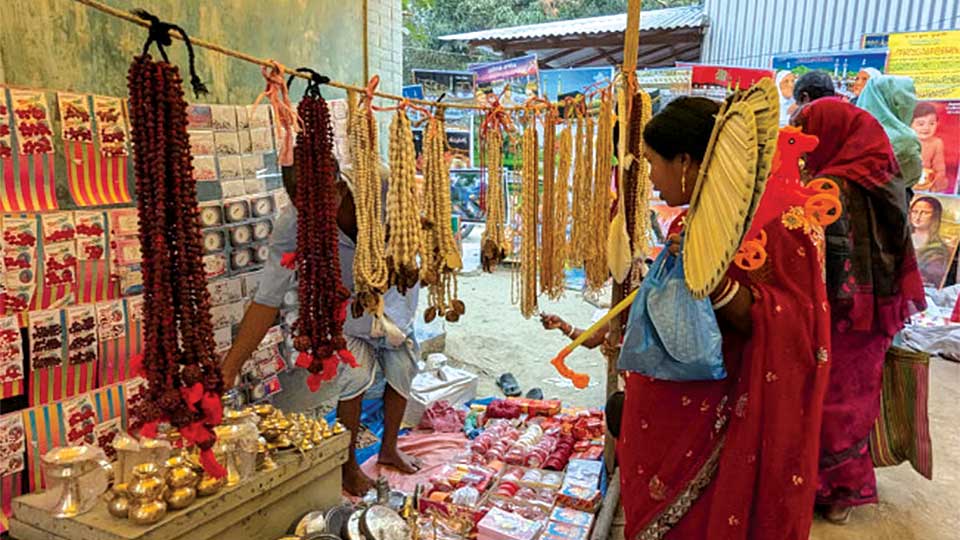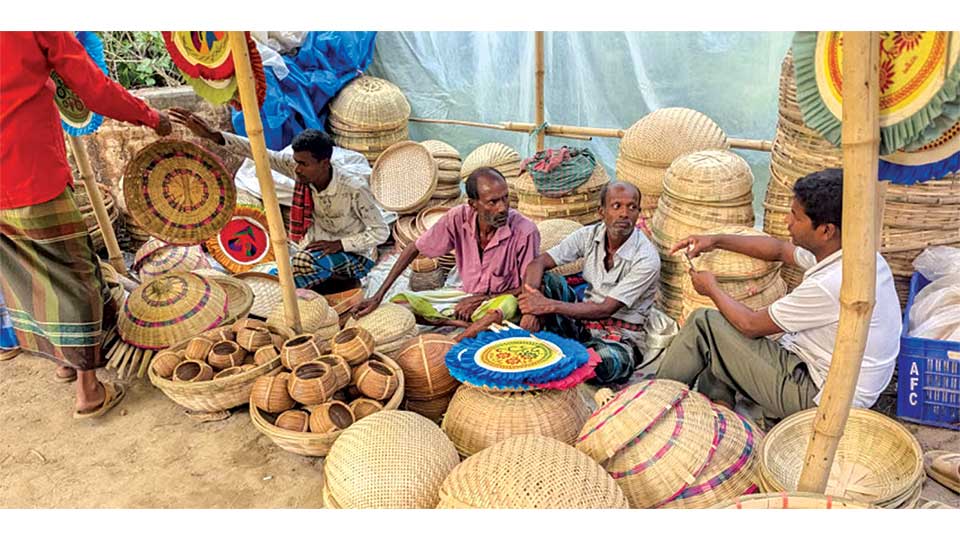Baishakhi Fair at Kauar Beel
300 years beneath the banyan's embrace
300 years beneath the banyan's embrace

Manikganj : Under the blazing Baishakh sun, villagers tread the narrow ridges of ripening paddy fields, their footsteps converging on a familiar heart of celebration -- the age-old Baishakhi fair of Kauar Beel.
Nestled in Mohadebpur union under Shivalaya upazila of Manikganj, this quiet hamlet blooms into colour and life each year on the last day of Chaitra and the first dawn of Baishakh, a 300-year-old tradition that gathers around the timeless shade of a sacred banyan tree.
With the New Year's calendar shift, the fair now unfolds across two days -- Pahela Baishakh and the day after -- transforming the village into a living mosaic of festivity, where every home swings open in welcome.
"Now every house brims with guests," says local resident Mohiuddin with a smile, adding, "The joy of the fair surpasses even Eid."
Along its sun-dappled lanes, a tapestry of sights greets the eye: women arranging bangles, cosmetics, and vermillion; vendors calling out with puffed rice, sweets, and jaggery; potters setting out rows of terracotta pots; artisans stacking baskets, fans, and farming tools woven from bamboo and cane, each holding the fragrance of the earth.
However, the fair is more than trade - it is a homecoming. Women return to their paternal courtyards, their voices mingling with laughter and memory.
"We visit at other times too," says Roksana Akter, "but only during the fair does it feel as if everyone is here -- even childhood friends."
Children dart through the crowd, hands sticky with sugar, their giggles echoing in the air. In one shaded yard, nine friends sit cross-legged, devouring kilos of sweets in playful contests.

"We used to bet on who could finish a kilo alone!" recalls Habibur Rahman, his smile carrying the warmth of nostalgia.
Bargaining too becomes a performance, especially over binni khoi -- the rare puffed rice delicacy. Sellers and buyers exchange playful banter as prices dance between BDT 250 and BDT 800, depending on quality and sweetness.
Cosmetic stalls draw clusters of women comparing bangles and vermillion.
"If I miss the fair, I feel like I've lost something precious," says Rekha Rani, visiting from Dhaka. Her sister-in-law, Usha Bhowmik, laughs, "She always spoke of it -- now I know why."
Nearby, bamboo hats (mathal) catch the afternoon light. A farmer tries one on, grinning, "This will keep me safe under the sun."
Around him, crafts of clay, cane, and bamboo breathe on-sustained by artisans like Horen Pal.
"Once, we could not meet the demand," he says wistfully.
"Now, plastic has taken over. But fairs like this keep us alive," he added.
Toy seller Gobinda Pal, a fixture here for thirty years, adds, "Outside these gatherings, no one asks for our craft. But here -- children's eyes still light up."
The fair also speaks softly of harmony. At one stall, postcards of the Kaaba and Hindu deities sit side by side with landscapes of rivers and hills.